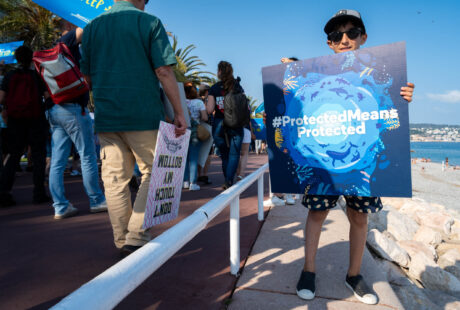This is the fourth year that Fundació ENT, together with Sciaena and Ecologistas en Acción, (members of Seas At Risk) has analysed the European Commission’s communications on EU fisheries in line with the maximum sustainable yield (MSY) for the period 2015-2019. The detailed analysis raises concerns about the methodology used by the Commission and showing that the number of stocks identified as being in line with EC-Comparison-2015-2019MSY in EU fisheries has been overestimated by 16% since 2015.
In order to allow fish stocks to recover to sustainable levels, the Common Fisheries Policy (CFP) requires the MSY exploitation rate to be achieved by 2015 where possible and at the latest by 2020 for all stocks. Today, five years after the entry into force of the reformed CFP, it remains much opacity around the real numbers of stocks exploited at sustainable levels in the EU, as defined by the number of Total Allowable Catches (TACs) in line with the scientific advice based on the MSY.
Since December 2014 (following the annual agreement of the EU Council of Fisheries Ministers), the European Commission has published a communication that lists those stocks that will be fished ‘in line with MSY’ in the North East Atlantic, North Sea and Baltic Sea for the following year. (i.e. see communication for 2019). However, these communications, which are essential to measure the steps made by EU Fisheries Ministers when establishing sustainable fishing limits, reveal significant inconsistencies that prevent evaluation of the true progress made in accordance with the legal requirements that EU institutions must meet.
More specifically, the comparison document produced by Fundació ENT shows that multiple TACs reported as being in line with MSY in 2015, 2016, 2017 and 2018 are no longer in that category in 2019. The detailed analysis also found errors and inconsistencies on the amount of sustainable fishing limits published by the Commission since 2015, showing that progress on ending overfishing in EU waters has been slower than expected.
For instance, the analysis for 2019 revels that:
- Four TACs should not feature as in line with MSY in the 2019 Commission list, as EU Fisheries Ministers set TACs exceeding scientific advice in relation to MSY.
- Five TACs should not be classified as being in line with MSY in 2019, as the International Council for the Exploration of the Sea (ICES) provides little or no MSY advice on catch available for those stocks or the stock does not correspond to a TAC or a stock area.
- Only seven of 13 TACs classified as new on the 2019 Commission list can be considered truly new.
According to this analysis, it can be reported that the overall number of TACs set in line with MSY should be:
30 for 2015 TACs, (instead of 30)
29 for 2016 TACs (instead of 38)
37 for 2017 TACs (instead of 47)
50 for 2018 TACs (instead of 53)
49 for 2019 TACs (instead of 59)
This alarming trend shows that progress towards ending overfishing has actually been reversed in the last year, demonstrating an alarming lack of progress taking into account the EU’s own legally binding deadline for achieving sustainable fishing limits for all stocks by 2020 at the latest.
Lydia Chaparro, one of the authors of this study, concludes that “overall, the Commission has overestimated by 16% the number of TACs set in line with MSY since 2015. This is why we again urge the Commission to increase transparency and incorporate substantial and essential improvements in its communication”.
Andrea Ripol, Fisheries Officer for Seas At Risk, adds: “In view of the CFP’s 2020 deadline, and the considerable amount of fish stocks still overfished in EU waters, we urge the Commission and Member States to ensure that all fishing opportunities for 2020 do not exceed scientific advice and to further ensure that the precautionary approach, as defined in the CFP, is also applied. It is time to stop delaying and secure sustainable fisheries in the EU”.
Posted on: 13 June 2019



